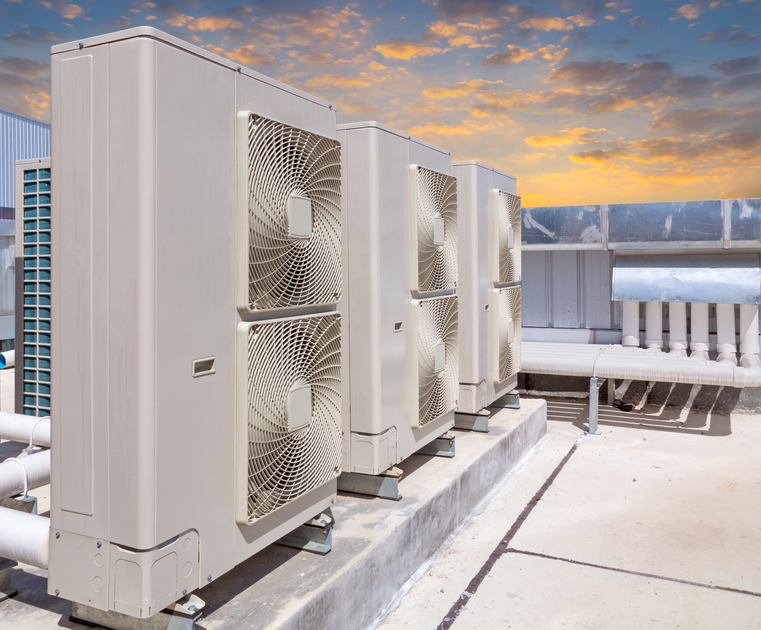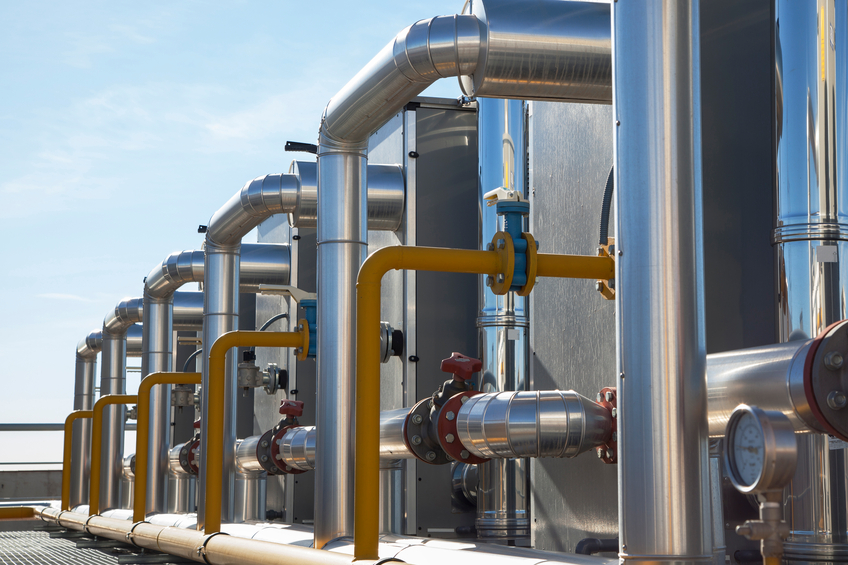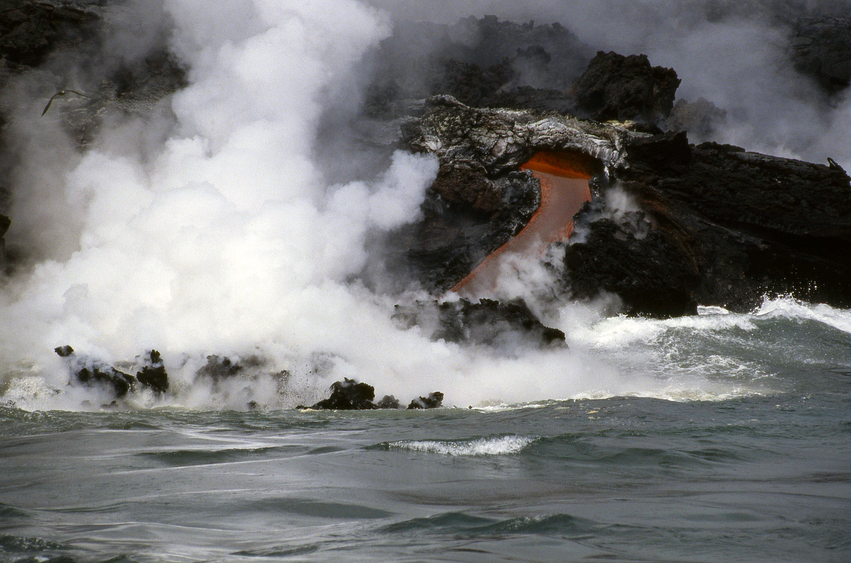Facility Specific HVAC Design 30 PDH Discount Package
HVAC Design for Cleanroom Facilities (M06-008)
HVAC Design for Healthcare Facilities (M06-011)
HVAC Design for Oil and Gas Facilities (M04-014)
HVAC Design for Pharmaceutical Facilities (M05-006)
HVAC Overview of Underfloor Air Distribution (UFAD) (M04-036)

This online engineering PDH course presents a detailed discussion on the key concepts and practices relating to data cooling technology as well as air flow practices that improve conditions for IT equipment and reduce overall HVAC energy consumption.
The basic physics of a data center is that electricity is converted to heat. Equipment in the data center expends power, generating heat, requiring air conditioning and ventilation equipment to keep them cool and running well. If the temperature rises too high, equipment will begin to malfunction or become damaged; as the internal components begin to swell and pull away from each other (or simply burn-up). The cooling system is also required to adjust the humidity of the air and to remove particles. Depending upon the climate at a data center's location, moisture may need to be added or removed. Similarly, the types and amount of particles to be removed from the air are determined by the location and external events.
Data center cooling is a highly specialized area that uses precision cooling equipment that differs from the conventional comfort equipment. The combination of heat and the high sensitivity of electronic components in data center environments demands maximum availability and performance of the cooling equipment. Precision cooling systems have been designed specifically for this purpose.
This 5 PDH online course is applicable to mechanical engineers, electrical engineers, HVAC consultants and engineers, architects, O & M professionals, facility managers, estimators and general audience seeking to gain a better understanding of HVAC cooling systems for data centers. No specific prerequisite training or experience is required.
This PE continuing education course is intended to provide you with the following specific knowledge and skills:
-
Understanding the data center space planning and utilities requirements based on current and future needs
-
Describing the various cooling options and how to apply them effectively
-
Understanding the fundamentals of heat gain, temperature and humidity requirements, pressurization and filtration, as applicable, to data centers
-
Understanding the difference between comfort versus precision cooling
-
Learning about the raised floor and overhead air distribution schemes for data center cooling
-
Understanding how airflow is managed in the data center to prevent hot air/cool air mixing and the ways to improve this with containment
-
Understanding the environmental implications, design and system pitfalls as well as energy efficiency optimization
-
Identifying the key elements of data center cooling systems including CRAC, DX system, chilled water systems, evaporative condensers, etc.
-
Explaining the implications of equipment placement, installation and decommissioning on cooling and energy efficiency
-
Determining how cooling may be applied in various data center scenarios
-
Learning about HVAC best practices and how they apply to a specific site and how they improve energy efficiency
-
Learning about the benchmark energy efficiency figures for ideal data centers
In this professional engineering CEU course, you need to review the course document titled, "HVAC Cooling Systems for Data Centers".
Upon successful completion of the quiz, print your Certificate of Completion instantly. (Note: if you are paying by check or money order, you will be able to print it after we receive your payment.) For your convenience, we will also email it to you. Please note that you can log in to your account at any time to access and print your Certificate of Completion.

This online engineering PDH course provides an overview of cleanroom and discusses the key HVAC design aspects applicable to cleanrooms.
Although the idea of a cleanroom may seem right out of science fiction, clean and controlled environments are actually used by a wide range of industries. From their more obvious uses in medical facilities to their necessity in integrated circuit manufacture, cleanrooms provide an essential role in modern production and research. At its most basic level, a cleanroom is just what it sounds like: an area kept free of contaminants.
There are five (5) key elements for the control of airborne particulate matter:
- Preventing entry of particulate matter
- Purging of particulate matter
- Prohibiting the generation of particulate matter
- Protecting the product from impact and settling of particulate matter
- Providing an area for the cleaning of parts and personnel
This 6 PDH online course is applicable to mechanical and HVAC engineers, process engineers, architects, building designers, contractors, energy auditors, facility managers who are involved in the design and installation of cleanroom facilities.
This PE continuing education course is intended to provide you with the following specific knowledge and skills:
- State the four fundamental rules that apply to cleanrooms
- Define contamination and list the various sources of contamination
- List the various classifications of cleanrooms as per Fed Standard 209 and ISO 14644 standards
- List the key differences between cleanroom HVAC and conventional systems HVAC
- State the four basic mechanisms of filtration and describe the methods of testing online filters
- State the specifications of HEPA and ULPA filters
- Describe the air velocity and the air change requirements for different cleanliness classifications
- Describe the design approaches for unidirectional and non-unidirectional air distribution
- State the methods for achieving temperature and relative humidity requirements
- Describe the cleanroom pressurization requirements and its impact on energy use
- Describe the cleanroom architectural requirements and the interaction interface
- Describe the energy conservation approaches and new developments applicable to cleanroom technology
In this professional engineering CEU course, you need to review the course document titled "HVAC Design for Cleanroom Facilities".
Upon successful completion of the quiz, print your Certificate of Completion instantly. (Note: if you are paying by check or money order, you will be able to print it after we receive your payment.) For your convenience, we will also email it to you. Please note that you can log in to your account at any time to access and print your Certificate of Completion.

This online engineering PDH course briefly outlines the best practices for design, construction and maintenance of healthcare HVAC systems. This course contains some, but not all, of the criteria pertinent to the design of HVAC systems for hospitals and is not substitute for industry standards such as AIA, OSHA, ASHRAE, ARI, JCAHO etc.
Hospitals and other healthcare facilities are complex environments that require special attention to HVAC design. Hospital air conditioning assumes a more important role than just the promotion of comfort. In many cases, proper air conditioning is a factor in patient therapy; in some instance, it is the major treatment. Studies show that patient in controlled environments generally has more rapid physical improvement than do those in uncontrolled environments.
Poor IAQ can adversely impact the patients' and staffs' health, comfort and productivity. To build an effective HVAC system, maintaining the quality of air as well as designing for the efficient removal of foreign particles is a challenge. The filtration and building pressure control is the most important component of HVAC design.
This 6 PDH online course is applicable to mechanical and HVAC engineers, process engineers, architects, building designers, contractors, energy auditors, facility managers who are involved in the design and installation of HVAC for healthcare facilities.
This PE continuing education course is intended to provide you with the following specific knowledge and skills:
- Infection control practices to minimize airborne contaminants
- Air distribution effectiveness within spaces served by the ventilation/HVAC systems
- Air quality requirements in the healthcare facilities
- Room pressure relationships of isolation rooms
- Temperature and humidity design criteria
- Filtration practices
- Selection of HVAC equipment including chillers, air-handling systems and distribution systems
- System reliability and redundancy recommendations
- Energy-conservative design practices for the healthcare environment
In this professional engineering CEU course, you need to review the course document titled "HVAC Design for Healthcare Facilities".
Upon successful completion of the quiz, print your Certificate of Completion instantly. (Note: if you are paying by check or money order, you will be able to print it after we receive your payment.) For your convenience, we will also email it to you. Please note that you can log in to your account at any time to access and print your Certificate of Completion.

This online engineering PDH course will help explain the complexities of HVAC design for offshore installations and how to go about carrying out the selection of a proper system and related equipment.
Oil & Gas (O&G) facilities are fraught with numerous challenges related to health and safety, logistics, economics, quality assurance and overall performance. HVAC design for such facilities needs special considerations not only to minimize the potential loss to capital investment but also to isolate the personnel from life-threatening environment. The main objectives of HVAC systems in O&G facilities include:
- Maintain acceptable working and living environment for personnel and non - destructive conditions for equipment.
- Prevent ingress of potentially explosive/toxic gas-air mixtures into non-hazardous areas, electrical switch rooms and equipment rooms.
- Prevent formation of any combustible mixture and maintain an atmosphere where the gas/air mixture is kept below LEL during normal operation.
- Provide dilution ventilation for all enclosed hazardous areas in order to reduce the risk from build-up of potentially explosive/toxic gases within these spaces.
- Prevent smoke spreading and keep enclosed escape ways free of smoke in case of fire.
This 4 PDH online course is applicable to mechanical and HVAC engineers, process engineers, architects, building designers, contractors, energy auditors, facility managers who are involved in the design and installation of HVAC for oil and gas facilities.
This PE continuing education course is intended to provide you with the following specific knowledge and skills:
- Be aware of the critical design issues related to oil & gas facilities
- Understand how an offshore installation different from an onshore installation
- Understand the concept of area classification for hazardous locations
- Understand the importance of pressure differential between hazardous and non-hazardous areas.
- Understand the critical system parameters that must be controlled and monitored
- Understand the importance of dilution ventilation to mitigate the impacts of accidental releases of flammable and toxic gases
- Understand the concepts of air cleaning and filtration requirements
- Understand the requirements of blast proof intake and exhaust valves in line with structural requirements
- Understand the specifications of HVAC equipment and machinery suitable for saline corrosive atmosphere
- Understand the importance of commissioning and documentation
In this professional engineering CEU course, you need to review the course document titled "HVAC Design for Oil and Gas Facilities".
Upon successful completion of the quiz, print your Certificate of Completion instantly. (Note: if you are paying by check or money order, you will be able to print it after we receive your payment.) For your convenience, we will also email it to you. Please note that you can log in to your account at any time to access and print your Certificate of Completion.

This online engineering PDH course provides an introduction to "Good Manufacturing Practices" with focus on the HVAC system design.
Pharmaceutical manufacturing is generally conducted in environments that are cleaner and are carefully controlled at a required temperature, humidity and pressure. The HVAC system assumes a large part of the responsibility in maintaining these clean environments.
Design of pharmaceutical facilities is governed by Good Manufacturing Practices (GMP's), which require companies to document how they intend to design and operate their facility. These are intended to set forth engineering requirements deemed necessary for safe design and operation of pharmaceutical facilities. Failure to comply puts the owner at both regulatory and business risk and therefore it is important that the pharmaceutical facilities are constructed under a rigorous and well-defined quality-control system.
This 5 PDH online course is applicable to mechanical and HVAC engineers, process engineers, architects, building designers, contractors, energy auditors, facility managers who are involved in the design and installation of HVAC for pharmaceutical facilities.
This PE continuing education course is intended to provide you with the following specific knowledge and skills:
- Be aware of the critical design issues related to pharmaceutical facilities
- Understand what GMP is and why it is important for safe guarding the end user
- Learn the current codes, standards and regulations that govern the GMP's
- State the requirements for proper pharmaceutical facility design including area classification, air change requirements and pressurization gradient
- Explain the importance of product, equipment, material and people flow in the facility
- Describe the cleanliness requirements for sterile and non-sterile operations
- Learn the cleanroom air classifications as defined by US FDA and European Economic Community (EEC)
- Describe HEPA filter theory, application, monitoring, testing, and repair
- Learn the importance of pressurization and air flow pattern
- Understand the basic air-conditioning schemes including types of air-handling systems (constant volume v/s variable volume)
- Learn about the air distribution ductwork materials, and location requirements
- Understand the commissioning, testing, validation and documentation requirements
In this professional engineering CEU course, you need to review the course document titled "HVAC Design for Pharmaceutical Facilities".
Upon successful completion of the quiz, print your Certificate of Completion instantly. (Note: if you are paying by check or money order, you will be able to print it after we receive your payment.) For your convenience, we will also email it to you. Please note that you can log in to your account at any time to access and print your Certificate of Completion.

This online engineering PDH course discusses how the UFAD system differs from the conventional HVAC design and reviews several key design issues pertinent to UFAD design.
Underfloor air distribution (UFAD) turns air supply upside down, allowing a floor plenum to deliver conditioned air to the space via floor diffusers in the raised floor system. The floor plenum typically consists of pedestals and removable floor panels that can be rapidly reconfigured. The space is divided into two zones: an occupied zone extending from the floor to head level, and the unoccupied zone extending from the top of the occupied zone to the ceiling.
The systems are designed to condition the lower occupied zone only and the temperature conditions in the upper zone are allowed to float above normal comfort ranges. The fact that conditioned air is delivered at floor level do provide energy savings while improving comfort and indoor air quality. While this strategy is most effective in new construction, it also can work in major retrofits. Thoughtful design is the key to successful application.
This 4 PDH online course is intended for mechanical and HVAC engineers, architects, building designers, contractors, civil estimators, energy auditors, facility managers and general audience interested in gaining a better understanding of underfloor air distribution systems. No specific prerequisite training or experience is required.
This PE continuing education course is intended to provide you with the following specific knowledge and skills:
- Understanding conventional overhead and underfloor air distribution systems
- Knowing the difference between displacement ventilation and hybrid UFAD systems
- Describing the comfort and productivity issues associated with UFAD systems
- Describing the energy savings and indoor air quality improvement with UFAD systems
- Differentiating between the perimeter and internal zones
- Understanding the design approaches and control strategies for UFAD systems
- Learning the access floor system design and construction issues
- Knowing the economics, condensation and fire protection issues related to UFAD systems
- Learning about the sustainability aspects of UFAD systems
- Knowing how UFAD systems add to energy efficiency applicable for LEED certification
In this professional engineering CEU course, you need to review the course document titled, "HVAC Overview of Underfloor Air Distribution (UFAD)".
Upon successful completion of the quiz, print your Certificate of Completion instantly. (Note: if you are paying by check or money order, you will be able to print it after we receive your payment.) For your convenience, we will also email it to you. Please note that you can log in to your account at any time to access and print your Certificate of Completion.